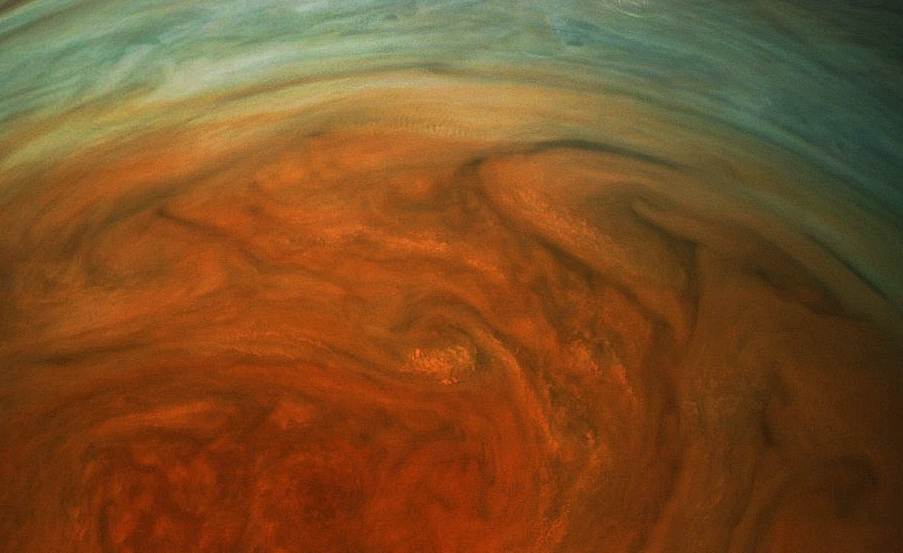Jupiter is the largest planet in our Solar System, and aside from Earth and perhaps Saturn it’s also the most recognizable. But unlike Earth or Saturn, Jupiter’s personality doesn’t come from massive oceans or a series of iconic rings; Jupiter’s rolling clouds and its massive storm, called the Great Red Spot, is what really sets the planet apart from its peers. Now, NASA’s Juno spacecraft has gotten its best look yet at the never-ending storm and discovered that it’s even more epic than previously thought.
Upon observing the storm up close, Juno sent back data that scientists have used to make some impressive deductions about the storm’s actual size. We’ve known for some time that the storm is wider than the entirety of Earth, but determining how deep it actually extends into the planet’s atmosphere has always been debatable. Thanks to Juno, we now know that the rapidly-moving, swirling clouds stretch 200 miles deep. That’s one big storm.
“Juno found that the Great Red Spot’s roots go 50 to 100 times deeper than Earth’s oceans and are warmer at the base than they are at the top,” Andy Ingersoll, a professor of planetary science at Caltech, explains. “Winds are associated with differences in temperature, and the warmth of the spot’s base explains the ferocious winds we see at the top of the atmosphere.”
Nobody knows for sure how long the Great Red Spot has been raging on Jupiter, but most researchers agree that it’s been swirling for at least 350 years. More recent observations of the huge storm suggest that it’s beginning to wane, if ever so slightly, with its overall size decreasing by around one-third in the past few decades. However, because scientists still understand very little about what drives the storm it’s impossible to say whether the spot is indeed sputtering out or simply going through a quiet period from which it will emerge even stronger and larger than before.
Juno just wrapped up its eighth flyby of Jupiter which NASA calls “science passes,” meaning that all of its instruments are up and running for observation. Its ninth is slated to take place on December 16th. The spacecraft is nearing the end of its initial mission timeframe, but as its hardware appears to still be in great shape, it’s likely that it will get a new lease on life with extended mission goals to follow.








